SUMMARY
This is AI generated summarization, which may have errors. For context, always refer to the full article.
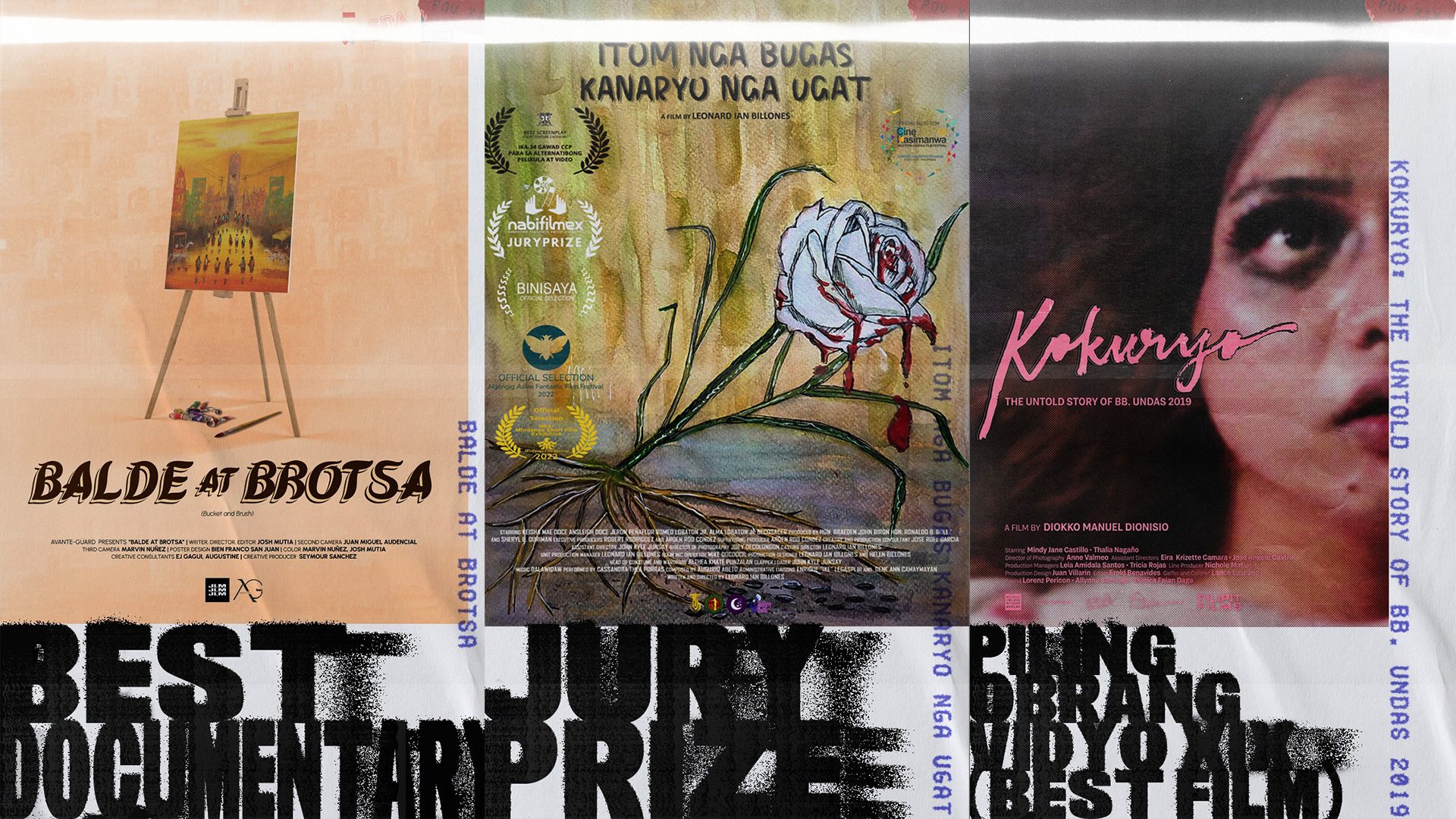
MANILA, Philippines – Student film festivals, local or otherwise, often serve as springboards for many young yet potent filmmakers who are still trying to navigate the scene. Almost two decades since its inception, UP Cinema’s Piling Obrang Vidyo continues to create and hold such space for a new breed of storytellers, especially for those who dare to offer fresh perspectives and cast light on narratives that rarely stand a chance in larger, commercial landscapes.
This year, the student showcase boasts a slate of 12 short films under three categories: narrative, documentary, and experimental. Each film presents a strong premise that, when seen as a whole, shares parallel preoccupations about gender identities, memories, and political uncertainties.
Here, I’ve written about the entire selection.
Narrative
Alingasngas ng mga Kuliglig by Vahn Leinard Pascual
Over the last few years, I’ve seen how Vahn Leinard Pascual steadily built his body of work, most of which have found acclaim in local and international spaces. Delving into various forms and genres, Pascual has shaped a particular eye for narratives that explore gender dynamics and cultural liberation, made most apparent in Blue Is Not My Favorite Color, Mundong Walang Katiyakan, and Sina Alex, Xander at Ang Universe.
Pascual maintains this preoccupation in Alingasngas ng mga Kuliglig, which tells the story of Agapito (played remarkably by AJ Benoza), a young folk-healer-to-be who develops forbidden love for a tikbalang – the very creature he’s supposed to get rid of, if not kill.
This isn’t the first time I’ve watched this film, and like my previous sentiment, I can’t help but admire how Pascual always finds imaginative ways to articulate what can easily be dispelled as straightforward ideas, confident that, by placing his trust in the image, it can work its own magic.
And this is to say that Alingasngas is a beautifully composed piece, with Pascual maximizing the silent film aesthetics: from the grainy black-and-white appeal that convincingly evokes the film’s zeitgeist, to the precision of the camera work and production design, to the meaningful queering of the image of the tikbalang.
But more than telling a romantic tale, Pascual also exploits the form to convey how tradition factors in many acts of cruelty committed against nature and its custodians, demonstrating that the director’s cinematic language here goes beyond sheer gimmick. This, by all means, is proof that young filmmakers out there have so much more to offer, if they’re only given enough funding, opportunity, and space.
Pempem at ang Bomba Magazine by Migs Ruallo
Migs Ruallo’s Pempem at ang Bomba Magazine banks on a fairly simple premise: a girl in a conservative household develops sexual desires after coming across an adult magazine. Yet the film never seems to tire of being playful every time the opportunity presents itself. And so much of this works because of Gene Sayson’s editing that expertly captures the film’s beating heart, just as Dada Garcia does in the lead role, although her acting still winds up faulty at certain points. The cleverness of Pempem, though, can only go so far, because it can feel didactic, if not repetitive, at times, especially towards the end. In hindsight, I think the film could still flesh out its conflict and go for more complexity beyond a charming sex education story.
Kokuryo: The Untold Story of Bb. Undas 2019 by Diokko Manuel Dionisio
The more I think about Kokuryo: The Untold Story of Bb. Undas 2019, the more I gravitate towards its lucid understanding of the cultural and material violence that trans people routinely endure – this violence that is present at every turn, this violence that hits too close to home, no matter how I try to walk away from it.
Kokuryo follows two trans best friends as they search for the person who pocketed a portion of their cash prize from a gay pageant. Writer-director Diokko Manuel Dionisio makes a wise decision by providing the material levity through the use of gay lingo that, of course, would not work if not for the command of Mindy Jane Castillo and Thalia Nagaño as the protagonists. Both actors know how to play their cards well, despite the seemingly over-the-top acting.
It’s incredible how Kokuryo strikes a delicate balance between its comedy and commentary, given how heavy its subject really is. So when the film reaches its conclusion, with the image of Mindy Jane at the back of a jeepney ride, rendered vulnerable by her silence, we know that the pain she’s displaying goes beyond the betrayal of her friend, but more because of the searing realities of transitioning, of the sorry state that she knows all this time like the back of her hand.
Itom nga Bugas Kanaryo nga Ugat by Leonard Ian Billones
It helps that this short’s provincial setting elevates its atmosphere and horror, even if the horror here isn’t as strikingly terrifying as one would expect, precisely because most of its scare tactics rely on the way director Leonard Ian Billones keeps the camera on the characters’ faces to come up with disturbing effects. And it works, but only to an extent. I just don’t think that the film’s reworking of the tamawo lore as an allegory for sexual abuse endured by many children in the Philippines registers as convincingly as it hoped it would be. If anything, the film would be more effective had it done away with that link.
Documentary
Ang Paghahanap kay Dalagang Bukid by Leia Amidala Santos
Mostly shot in black and white, Ang Paghahanap kay Dalagang Bukid opens with the filmmaker’s childhood photographs against her own voice-over as she talks about her creative process, providing the impression that the film’s impetus comes from a very personal place, and it surely does.
Relying on a talk-heading style, director Leia Amidala Santos attempts to uproot the story behind Dalagang Bukid, touted as the first Filipino feature film ever produced. This lost film, made by the director’s great-great grandfather José Nepomuceno, has been recently re-imagined by Jaime Morados in Ang Pagliligtas sa Dalagang Bukid, albeit to an unsatisfying result.
This documentary, despite its profound premise, doesn’t fall far from Morados’ work. And even if I agree with all its thematic interests, I still think that it’s not as neatly tied as it needs to be: from the jarring use of the split screen, to that abrupt cut when an interviewee recalls Martial Law, and to the disturbing use of Dalagang Bukid as a transitional device. More broadly, the film meanders in terms of its central preoccupation by trying to discuss all in the same breath the history of Dalagang Bukid, its hopeful remaking from a woman’s lens, and the filmmaker’s musings about her career choice that, again, seem too fragmented.
Simply put, I was more excited about what this film could have been than what it actually was.
Balde at Brotsa by Josh Mutia
In Balde at Brotsa, director Josh Mutia follows three artists as they contemplate the value of their art amid our fraught zeitgeist. It helps that Mutia is able to extract rich responses from his subjects, especially from Mira, and he takes advantage of this by juxtaposing Mira’s sentiments against a generous amount of footage and images. And I’ll always admire works like this, that continue to confront what art can and can’t do, but I can’t deny that this film still requires deeper interrogation. I feel like this could have been far more solid had it delved further into the struggles of its first two subjects, Maldez and Karling, who sell their paintings on the street just to get by, which is to say, this could have been far more curious about the issues it tackles, instead of relying on a rather limited fly-on-the-wall approach.
elehiya para sa mga memorya by Ryan Miguel Capili
True to its logline, cinema in elehiya para sa mga memorya acts as a site of recollection, as the filmmaker, using old photographs and footage, meditates about the experience of witnessing his grandmother get betrayed by her own memory. Reminiscent of JT Trinidad’s Like People, They Change Too, the film’s lack of voice-over renders the viewing experience more intimate, alongside the poem that accompanies it, despite the imperfections of said text, evoking how fragile our memory can be that all one can ever do is relive the haze and untangle everything in pixels. It’s so brutal it’s almost beautiful.
The Secret Band of Thebes by Augustine
At the height of the pandemic, the alter world, a community of consenting adults sharing erotic content online, has significantly attracted more creators, primarily due to economic instability. Banking on anonymity, these alter accounts, however, pose a danger for victims whose private sex videos are traded across several platforms without their consent.
Director Augustine interrogates this issue in The Secret Band of Thebes, mixing animation, testimonials, and news footage to drive its point home. But as much as I admire its intention, especially for a topic that rarely gets coverage, I can’t help but find its presentation a bit jarring. The opening animation is an inspired choice, and I just wish that the film had taken more advantage of it, considering that most of its shots are censored. I also don’t think that the inclusion of the reportage, while informative, does the work any good. If anything, it comes off rather preachy and goes against the rest of the documentary’s tone. After some time, the film also just begins to repeat itself, which is a shame. Yet one can still find some sincere, valuable insights here.
Experimental
Internal Conflicts of a Machine by Bianca Maxine Villanueva and Rei Cordero
Three images dominate Internal Conflicts of a Machine: a man, a fish, and strobing lights. All of these images repeat against an ominous sound design, as if they’re caught in a simulation. And honestly, for such a two-minute piece, it’s hard to expound on it, precisely because it already gets the message across – how it attempts to find humanity in a system that is the complete opposite and how it sees life as something so performative, devoid of emotion. Yet, despite the clarity of its impetus, I don’t really find something of lasting effect about it. Maybe because there isn’t much richness in meaning, or at least something new, here.
Mind Body by Josh Van Ulric Campo
As its title warrants, Mind Body is as existential as it can get, embodying the proverbial struggle that we all contend with. Yet despite its gripping score and interesting use of the split screen, I find it difficult to connect with its emotional heft. Perhaps because I’ve seen something of this kind before — with a message better articulated at that.
PEOPLE FADE AS COLORS DO by Josef Edward Tafalla
The film opens with a declaration: “Lahat tayo ay hindi buo at kailanman ay hindi mabubuo (We are all incomplete and will never ever be complete),” which sums up its motivation. Like Mind Body, this piece also uses the split screen, ushering in an acknowledgment: of endings before they even begin, of the possibility and futility of art, of finding meaning in silences. Intimate and pensive, PEOPLE FADE AS COLORS DO thrives on its simplicity, confident that less is truly more and that, sometimes, sheer heart is enough to get a message across.
self-portrait by Daphnee Gail Ferrer
There’s no denying that, among all entries in the roster, self-portrait has the most crisp visual language. Daphnee Gail Ferrer’s images, in their sharpness and lucidity, lend the film its biggest merit, especially in ways that its distortions and permutations elicit a particular sense of understanding oneself, of both tension and tenderness, of the very process of naming and unnaming, of making and unmaking. And for such a short time, self-portrait succeeds in capturing how cinema can be a space beyond self-expression, even though it seems like the film’s central fixation. This is perhaps the most entrancing experimental work I’ve seen in recent memory.
– Rappler.com
Add a comment
How does this make you feel?
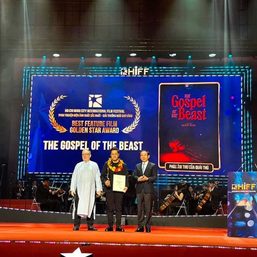
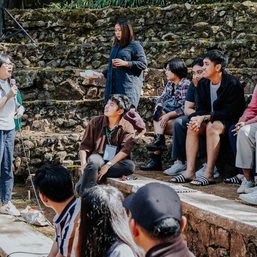
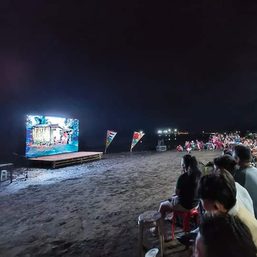
![[Only IN Hollywood] Eugene Domingo steals show at Manila International Film Festival](https://www.rappler.com/tachyon/2024/02/MIFF2024EugeneDomingoJokingkyAsksForAKissByDingdongDantesBeforeAnnouncingBestActorWinnerBySthanleeBMirador1.jpg?resize=257%2C257&crop=163px%2C0px%2C955px%2C955px)
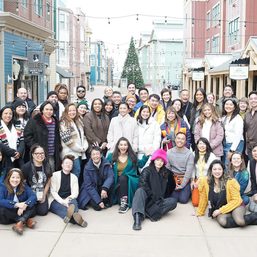
There are no comments yet. Add your comment to start the conversation.